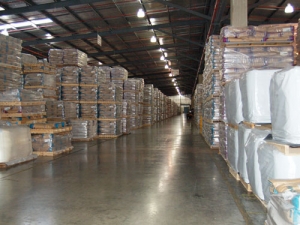After an encouraging rise, then fall, in dairy product prices in the first quarter of this year, milk producers and manufacturers are again looking for the upside as planning for next season is either well underway or done for most.
The market is still out of balance: available product supply overhangs expected short-term demand from importers, such that exporter stocks of product are relatively high and, according to our numbers, still building.
The uncertainty of what lies ahead weighs on dairy product buyers. Why commit to bigger orders now when prices could be lower later, and there is already plenty on hand? That’s commodity-trading 101.
Why so? The US industry is expected to keep growing. Milk prices might be falling but feed (mostly corn and soybeans) is cheap and plentiful.
Europe has meanwhile entered its quota-free era with competitive producers threatening expansion of production at a time when the Eurozone economy – and the affordability of discretionary dairy spending – is getting weaker.
With a smaller cheese export market arising from the ongoing spat with Russia, much of the threatened growth in supply will head into milk powder production.
These pressures aren’t new and have been building for some time. So it is the outlook for the demand side of the market that matters most if it is to recover quickly.
Several things have upset global import demand in the past year.
The hangover from the crash in prices that started a year ago created an abundance of cheap product, allowing price-sensitive buyers in SE Asia, the Middle East and North Africa to stock up, after being shut out in 2013 by the surge in prices. They are still working through those stocks, and now they aren’t buying as much.
But it’s probably the shrinkage of orders from well-stocked Chinese buyers since the middle of last year that has created the greatest worry, especially for the managers of Fonterra’s GDT platform, which is triggered to fall if buyers don’t show up in the virtual trading room.
The belief was that China is structurally short and would be forced to keep buying higher volumes of imported ingredients into the medium term. So, when will China run low on stocks and come back to the market with gusto? There are no easy answers to this question.
China is one of the least transparent regions in respect of its own production, product mix and retail demand, let alone insight on what stocks it holds. This is a far cry from the nirvana in the US where all of this is gleefully reported to the USDA and published freely.
The stock of milk powder in the Chinese industry is driven by significant local powder production from domestic milk supply (which meets about 80% of dairy requirements), powder imports and consumption growth in a range of drinks and applications.
The only hard data that exists on these three is the volume of imports, because it comes from the governments of countries supplying China. The rest has to be bravely assumed, which we’ve had a crack at.
Various in-country studies have been done in recent years to create some anchor points for these variables, sufficient to allow us to create an index of powder stocks over time.
To cut short a long and technical story, the stocks barometer shows the Chinese market is still munching and guzzling through a large stockpile of WMP. This is the reverse of that in South East Asia and Middle East/North Africa: China seems to be working through a mountain of high-priced stocks built when the market was at its peak, which it is probably ‘shandying’ back into its market.
Many variables affect this situation. Local milk production is reported to have posted a decent recovery in 2014 (resulting in more local powder) but it has been weakened by the recent slump in farmgate milk prices with an oversupply of product.
Meanwhile the retail market is a little more sensitive to prices these days, now that the days of double-digit economic growth have passed.
The chart (right) shows our stocks index at the end of February 2015. The estimated ‘threshold’ line is important. It shows China is likely to be currently holding reserves well above a likely threshold for re-entry to the market, and is still building based on early 2015 shipments.
Buyers won’t come storming back to the market until those stocks get uncomfortably low again.
The market will get better: developing world markets are growing faster than production from the New Zealand, EU and US industries can muster. Once stocks are depleted, expect a turn.
• Steve Spencer is a director of Fresh-agenda, a food and agribusiness consulting firm.


















